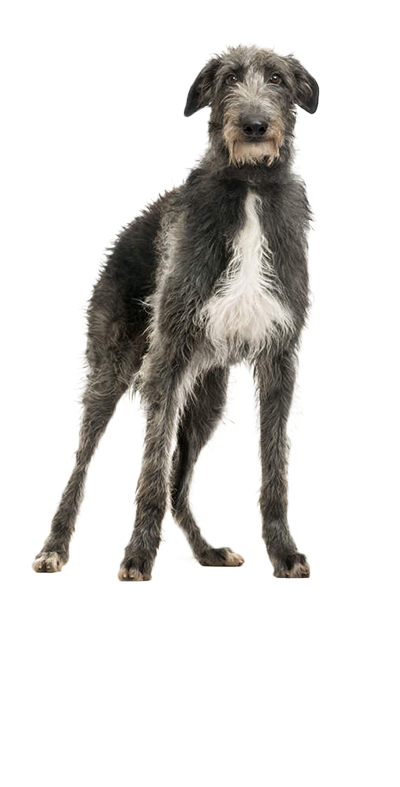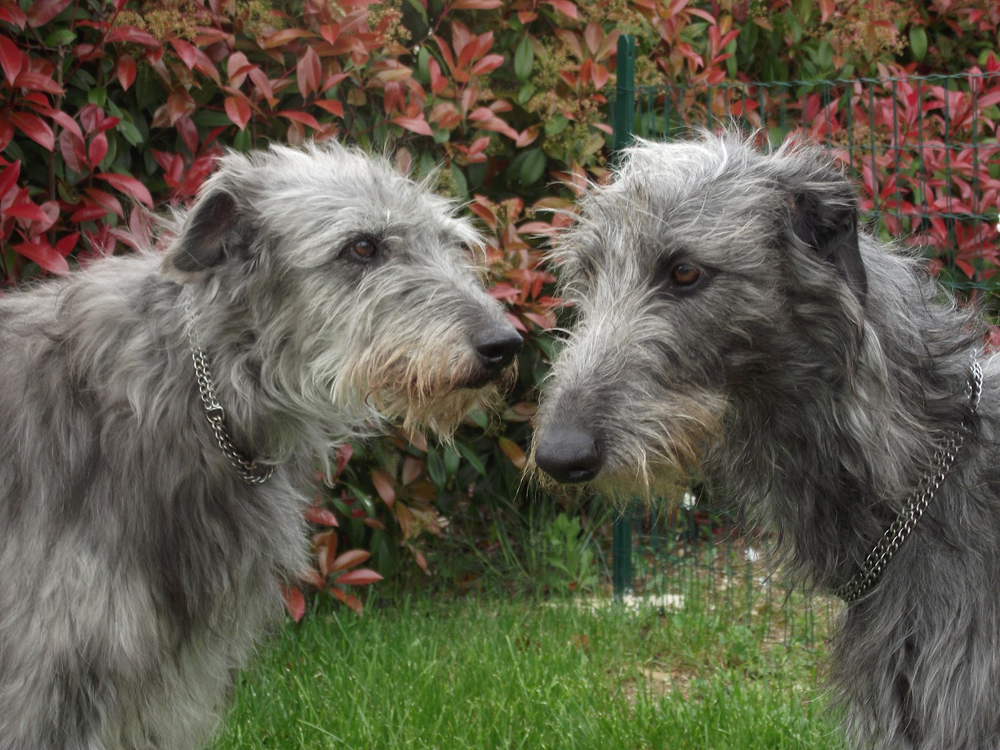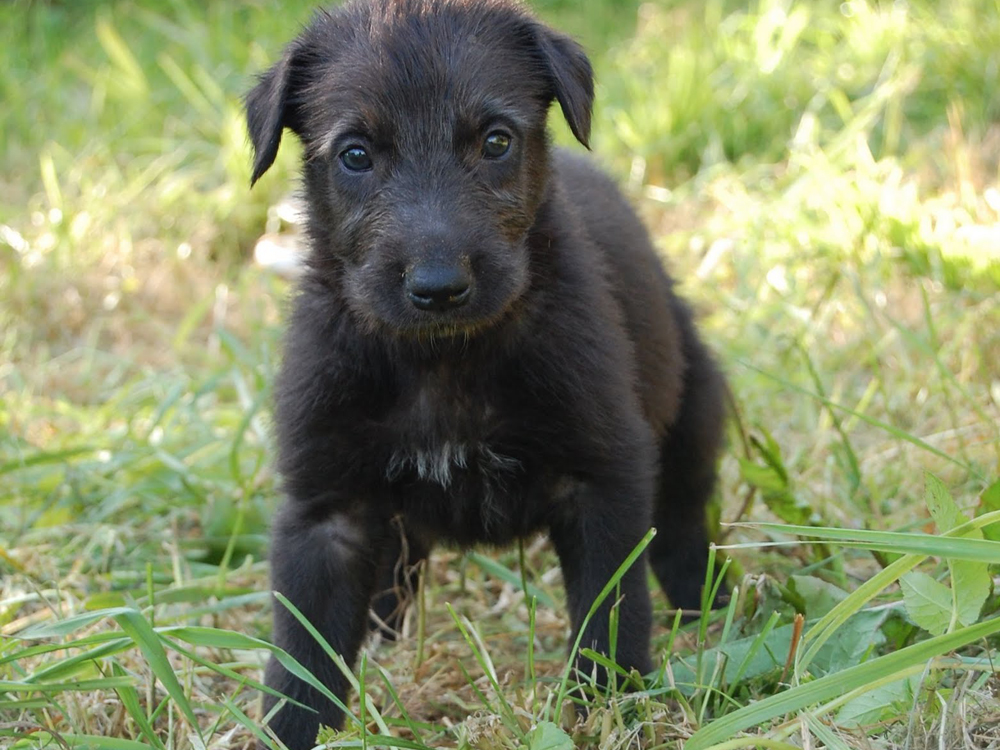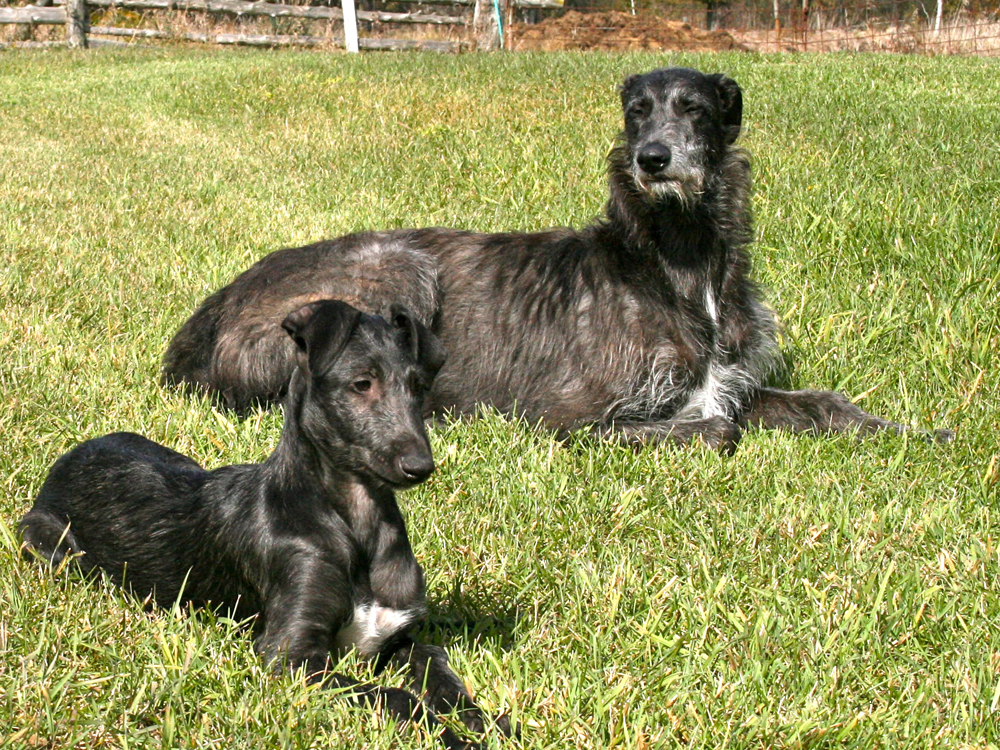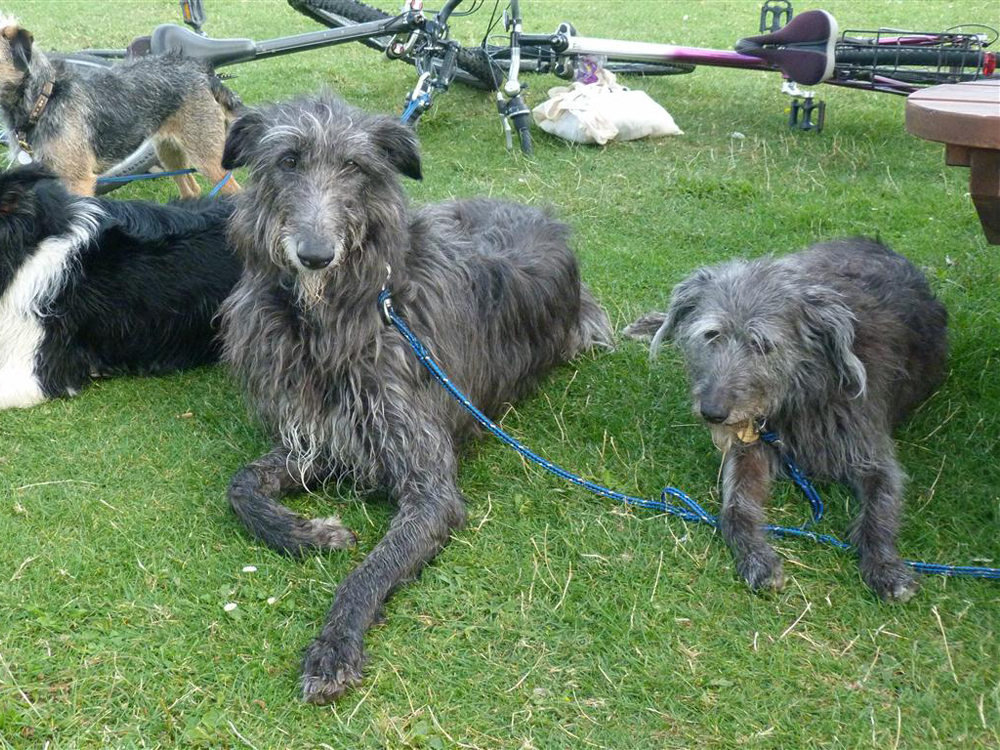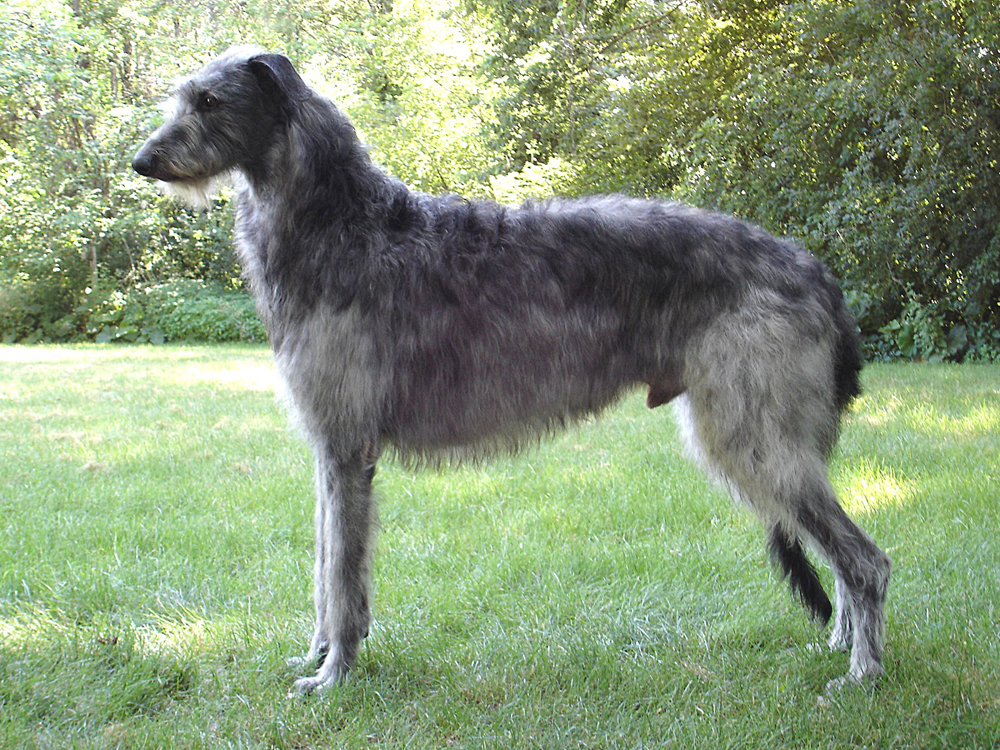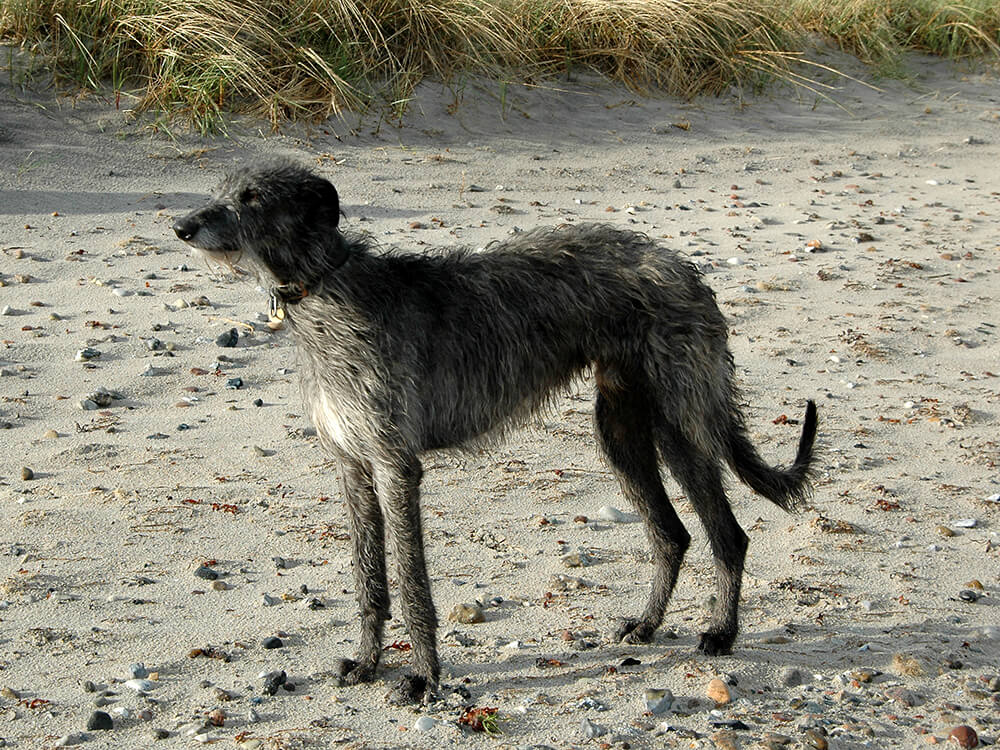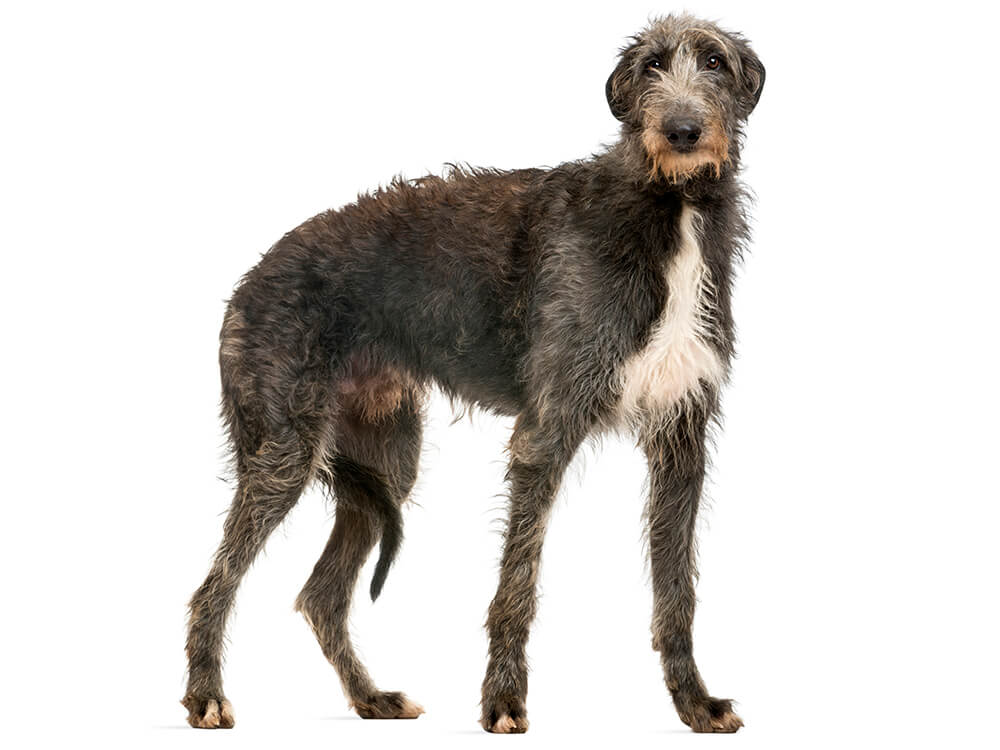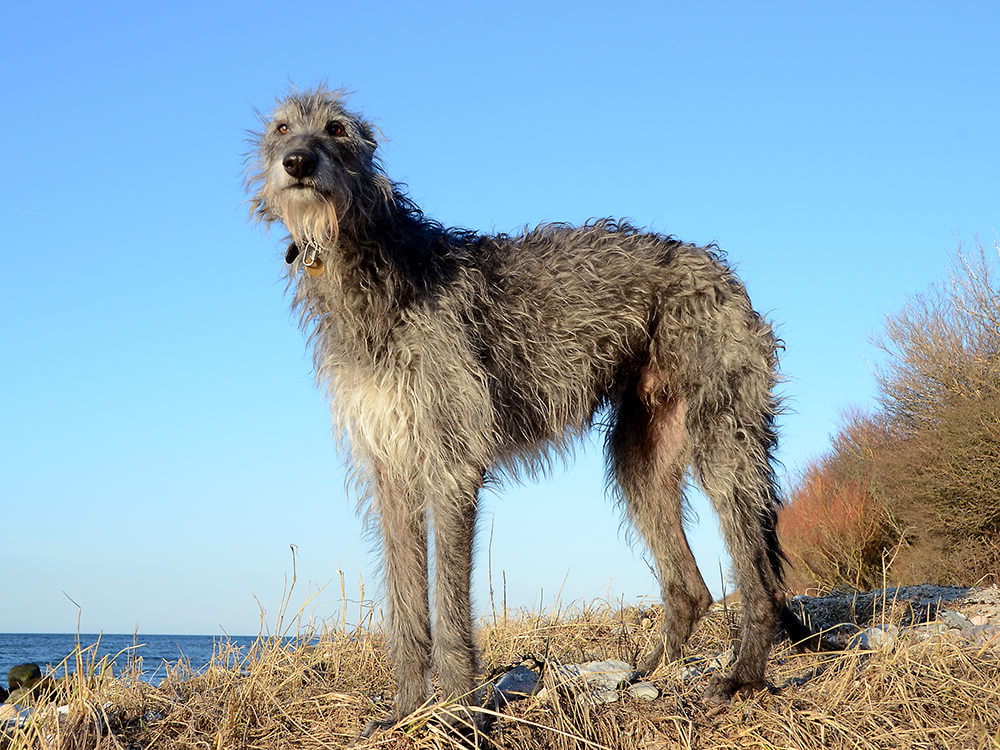
Deerhound Breed Pictures
Vital Breed Stats
| Height: | 71 - 81 cm M | 71 - 81 cm F |
| Weight: | 34 - 49 kg M | 34 - 49 kg F |
| Breed Group: | Toy Dog Group |
| Life Expectancy: | 10 - 13 years |
| KC Registered: | No |
Breed Characteristics
| Size: |  |
| Grooming: |  |
| Exercise Level: |  |
| Trainability: |  |
| Barking Level: |  |
| Good with Children: |  |
| Good with other pets: |  |
| Affectionate: |  |
| Protective: |  |
| Cost to Keep: |  |
Give a thumbs up if you love the Deerhound

0
More About the Breed
History
The actual origins of the Deerhound are unclear, although records suggest that they existed around 1st century AD as they are depicted in a Roman pottery found in Argyll, Scotland. The pottery showcases a deer hunt using large rough hounds. It is obvious how the name Deerhound came to be as this dog breed was utilised to hunt red deer until the end of the 19th century.
Deerhounds were highly valued for their courage and dignity. They became known to be the Royal Dog of Scotland, not only for their qualities but also because only a nobleman can own and claim a Deerhound. The restrictions on ownership meant only a few Deerhounds were bred, which did not bode well for its survival.
It was in the late 1700s that Deerhounds were nearly brought to extinction when the clan system of the nobility collapsed after the battle of Culloden in 1745. This is also the period when the Deerhound was stripped off its status as a dog for nobility. There were attempts to revive the breed in the 1820s by Archibald and Duncan McNeil. The breed was brought to America and was first registered by the American Kennel Club in 1886.
Today, the Deerhound is still a rare breed. With the advent of modern rifles and a preference for slower tracking dogs for hunting, the Deerhounds went out of employment. Nevertheless, the Deerhound is a good family pet due to its affinity with children.
Appearance
The Deerhound is a large, elegant-looking hound dog that weighs 75 to 110 pounds. It is known to be among the tallest sighthounds standing 71 to 76 centimetres at the withers. It has a large, long head that is broad especially at the ears. It has small ears that are dark, soft to touch and is folded back against the head. It has muzzles that taper toward the nose, nice level lips and strong haw with the perfect scissor bite. The Deerhound's eyes are dark, which can be hazel or dark brown in colour.
When it comes to the coat, Deerhounds sport a thick and long wiry coat that is harsh to the touch. Their coat is meant to protect them from the rough terrain in the Scotland Highlands. However, the texture and quality of their coat change depending on the climate of where they are raised. For instance, Deerhounds in America usually have a mix of silky and wiry coats. Coat colours range from dark blue-grey, dark grey, brindle, light grey, red, fawn, yellow, and sandy red.
Grooming
Temperament
Intelligence
Deerhounds require adequate space for their large size, long strides and powerful gallops. They are ideal for people who live in the countryside and are able to dedicate time to its training and exercises. This dog breed is smart and is a people-pleaser, which means training will be easy. However, it is best to start its training and socialisation when it's young.
The Deerhound is aloof and polite to strangers. When it comes to other household pets, Deerhounds get along well with cats and other dogs but will not hesitate to chase any small furry creature that runs.
Nutrition
Like humans, each dog has different nutritional requirement. When in doubt about what to feed and how much to feed a Deerhound, consult with a veterinarian.
Typical calorie needs of adult Deerhound per day:
- Senior and less active: up to 1,810 calories daily
- Typical adults: up to 2,040 calories daily
- Physically active/working dogs: up to 2,265 calories daily
Feeding
Health
Exercise
Cost of Ownership
The Deerhound is an expensive dog costing no less than £1,000 and £1,200 for a well-bred pedigree puppy. Contributing to its high price is the fact that it is rare and only a few puppies are registered per year. This ultimately means you will need to be patient on a waitlist.
Other than the price to purchase a Deerhound puppy, there are a few things that will prove to be financial roadblocks if you're not prepared. Let's start with pet insurance. Pet insurance will cost you around £70 to £130 a month, depending on the level of coverage you avail. Then there's the veterinary expense. The cost for initial vaccinations, boosters, neutering (at the right time) and routine checks will quickly add up to £2,000 a year.
When it comes to food, buy high-quality dog food, which is around £60 to £70 a month for a large dog like the Deerhound. On average including the necessities such as dog supplies, you will be shelling out roughly around £140 to £210 a month.
Is a Deerhound Right for You?
- The Deerhound is a large scenthound and is among the tallest.
- It is dignified, friendly and gentle despite its size.
- It sports a thick and long wiry coat that sheds throughout the year.
- It's not the best choice for fist-time dog owners.
- Deerhounds need a lot of space and will not do well to city living.
